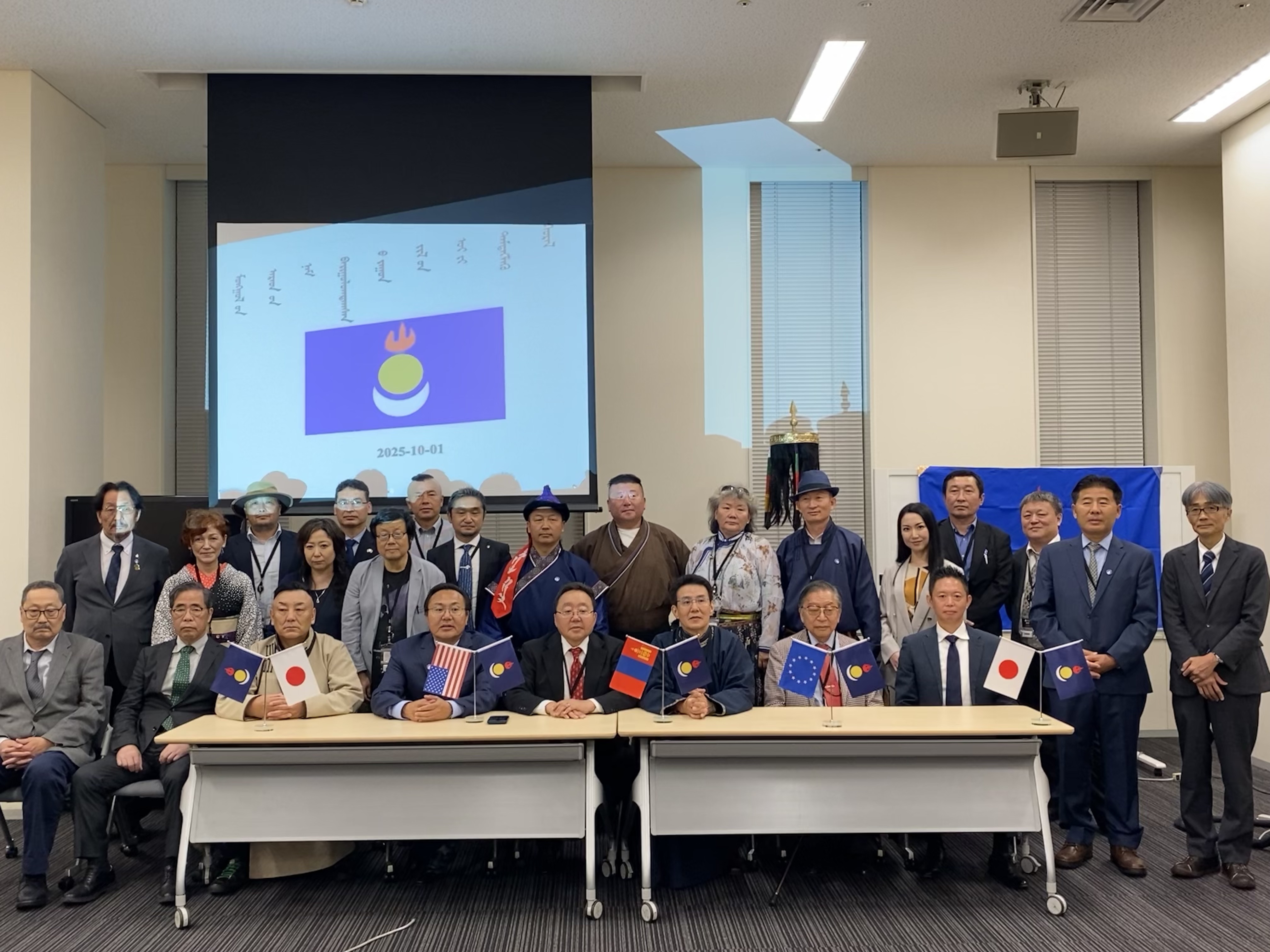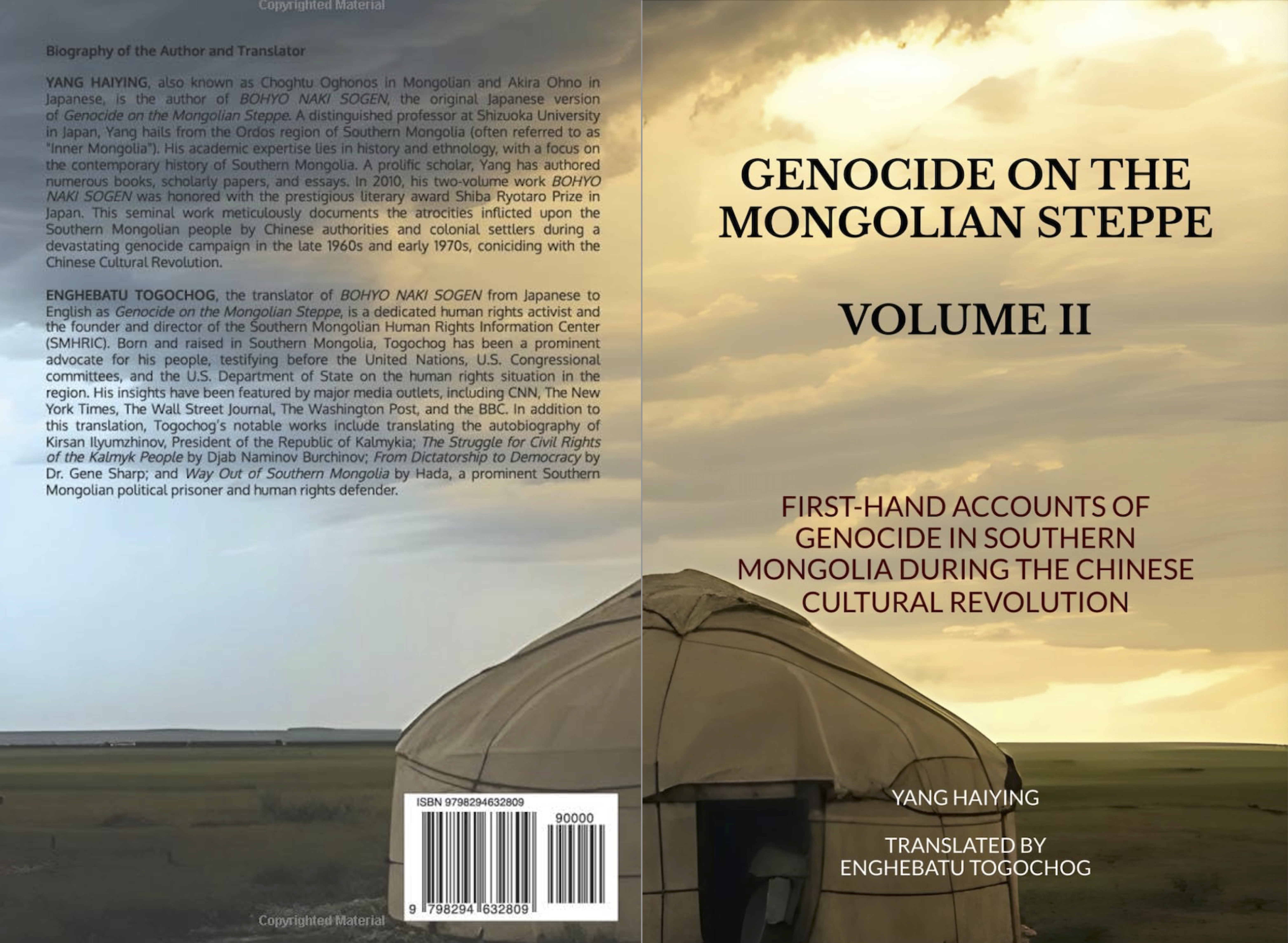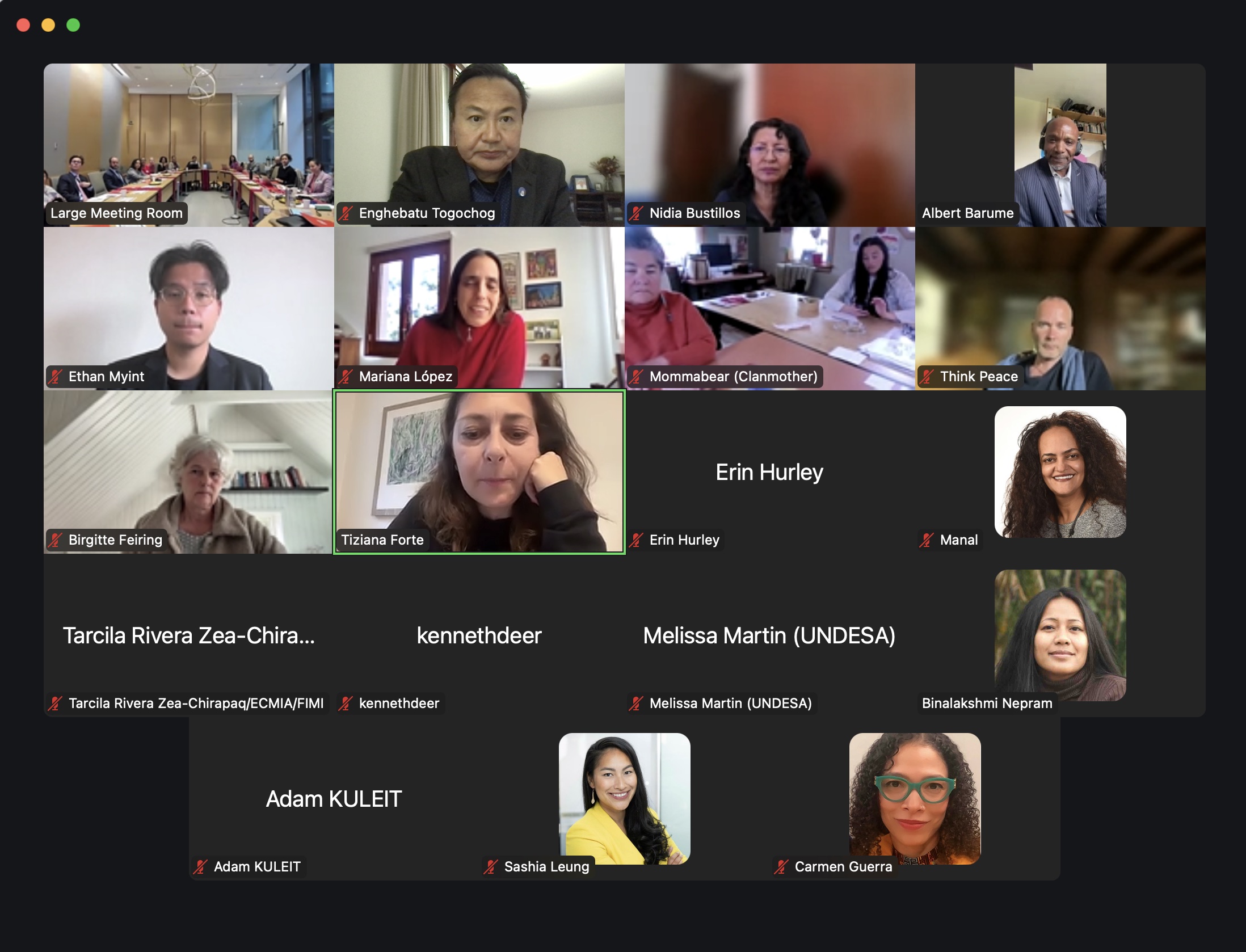 |
 |
 |
 |
To gather and distribute
information concerning Southern (Inner) Mongolian
human rights situation and general human rights issues;
|
 |
To promote and protect ethnic
Mongolians’ all kind of rights such as basic human rights,
indigenous rights, minority rights, civil rights, and
political rights in Southern Mongolia;
|
 |
To encourage human rights and
democracy grassroots movements in Southern Mongolia;
|
 |
To promote human rights and
democracy education in Southern Mongolia;
|
 |
To improve the international
community’s understanding of deteriorating human rights
situations, worsening ethnic, cultural and environmental
problems in Southern Mongolia;
|
 |
Ultimately, to establish a
democratic political system in Southern Mongolia.
|
|
|
 |
 |
 |
|
Conference Commemorates the 100th Anniversary of the Founding of
the Inner Mongolian People’s Party at the Japanese Parliament
Building |
|
|

|
... A congratulatory message was delivered on behalf
of the Parliamentary League for Supporting Southern
Mongolia, chaired by Hon. Sanae Takaichi, Member of the
House of Representatives.In her message, Hon. Takaichi
stated, “Wishing that the path to freedom and happiness for
all the people of Southern Mongolia will open and lead to a
bright future, the members of our parliamentary league will
continue to work together with you.” IMPP President Mr.
Khuvisgalt Khereid delivered the keynote address, recounting
the century-long history of Southern Mongolia’s struggle for
freedom and reaffirming the Party’s unwavering commitment to
achieving the independence of Southern Mongolia. A special
highlight of the event was the presence of His Excellency
Elbegdorj Tsakhia, Former President of Mongolia, who gave a
powerful and inspiring speech. In a special session
titled “Conversation with the Former President of Mongolia”,
hosted by Mr. Enghebatu Togochog, Director of the Southern
Mongolian Human Rights Information Center (SMHRIC) based in
New York, President Elbegdorj called on all Mongolians
worldwide to unite in defense of their culture, language,
identity, and their rights to national freedom.
He emphasized ....
|
|
<details>... |
|
BOOK
RELEASE: "Genocide on the Mongolian Steppe" (Volume II) |
|
|

|
... Commemorating the 100th Anniversary of the Founding of
the Inner Mongolian People’s Party, the Southern Mongolian
Human Rights Information Center (SMHRIC) announces the
release of Genocide on the Mongolian Steppe: First-hand
Accounts of Genocide in Southern Mongolia during the Chinese
Cultural Revolution (Volume II), translated from Japanese
into English by SMHRIC Director Enghebatu Togochog. “This
year, 2025, marks the 100th anniversary of the founding of
the Southern [Inner] Mongolian People’s Party, established
in 1925 as the preeminent political organization in Southern
Mongolian history,” Togochog stated in the “Translator’s
Acknowledgement” of the book. Both Enghebatu Togochog and
Professor Yang Haiying, author of the original Japanese
volume BOHYO NAKI SOGEN, assert that the genocide of
the Mongolian people during China’s Cultural Revolution was
a crime against humanity that has remained largely hidden
from the historical record. “This book is not only a
historical recounting but also a solemn dedication to the
hundreds of thousands of Southern Mongolians who lost their
lives in the genocide campaign executed by the government of
China and Chinese colonial settlers in ....
|
|
<details>... |
|
Hudson
Institute recommends U.S. government support the independence of
Southern Mongolia in the event of the CCP collapse |
|
|

|
...
Inner
Mongolia The Autonomous Region of Inner Mongolia
will face three choices: gaining independence,
remaining as an autonomous part of China, or uniting
with the neighboring Republic of Mongolia. Though
unification may at first seem reasonable, a closer
look indicates it is not likely, and the United
States should support its sovereign independence
instead. Inner Mongolia borders the Republic of
Mongolia, which is one of the world’s most sparsely
populated countries with just 3.3 million people and
ranks among the free nations of the world.248 Once
part of the Mongol Empire of Genghis Khan, Mongols
on both sides of the border share a common language
and continue contact with cross-border trade and
travel. Some 95 percent of the residents of the
Republic of Mongolia are ethnically Mongol, and many
of them, like many within Inner Mongolia’s ethnic
Mongolian community, are Buddhist.249 Tibetan
Buddhism arrived there in the sixteenth century, and
four centuries later, reportedly a third of the
Republic of Mongolia’s adult males were Buddhist
monks. In 2016, the Dalai Lama discovered a boy
there whom he considers the reincarnation of a high
spiritual leader. Inner Mongolia, though, has been
the target of accelerating forced
.... |
|
<details>... |
|
SMHRIC
Statement at "Pathway Forward: UNPFII Debrief and Indigenous
Peace-building as an International Peace, Healing and Security
Issue" |
|
|

|
...
My name is Engehbatu
Togochog, and I am a
Mongolian from the
indigenous Mongolian
community in Southern
Mongolia or known as
“Inner Mongolia” of the
People’s Republic of
China.
I would like to take
this opportunity to
bring to your attention
what is happening in the
six million indigenous
Mongolians’ community in
Southern Mongolia.
Southern Mongolia was
taken over by the
People’s Republic of
China in 1949. During
the past seven decades,
the government of China
took away our political
rights, destroyed our
indigenous way of life
and devastated our
natural environment.
What is happening now in
my community is an
ongoing “cultural
genocide” carried out by
the government of China,
aiming at the complete
erasure of our language
and identity. Starting
September 2023, the
government of China
COMPLETELY banned
Mongolian language in
the entire educational system
from kindergartens to
colleges and all spheres
of public
life. This is happening
as we speak. I would
like to
kindly ask for your
attention to this
massive “cultural
genocide” that is
happening in front of
the eyes of the
international community.
China signed for the UNDRIP (United Nations
Declaration on Rights of
Indigenous Peoples) with
an absurd justification
claiming that “China does not ....
|
|
<details>... |
|
 |
|
|
|





